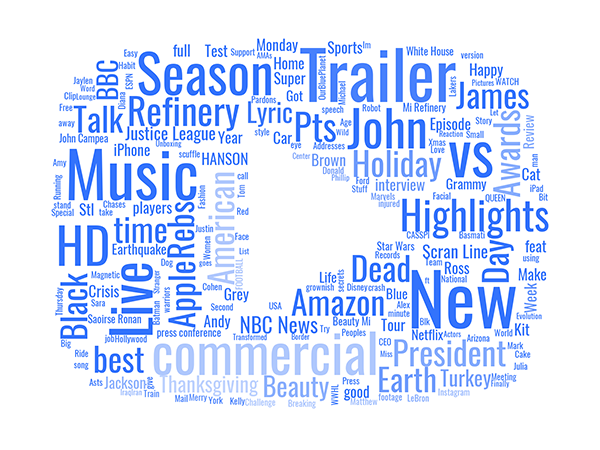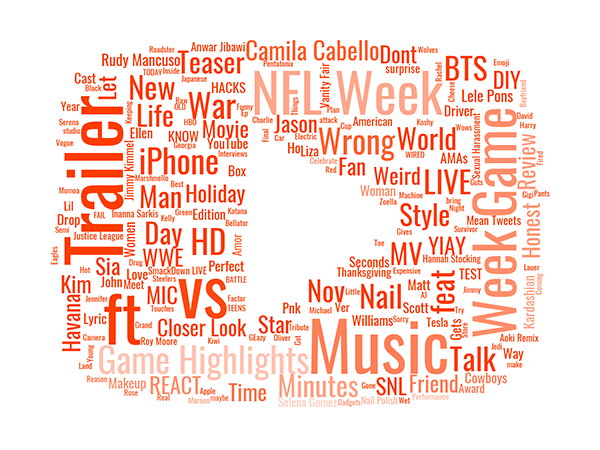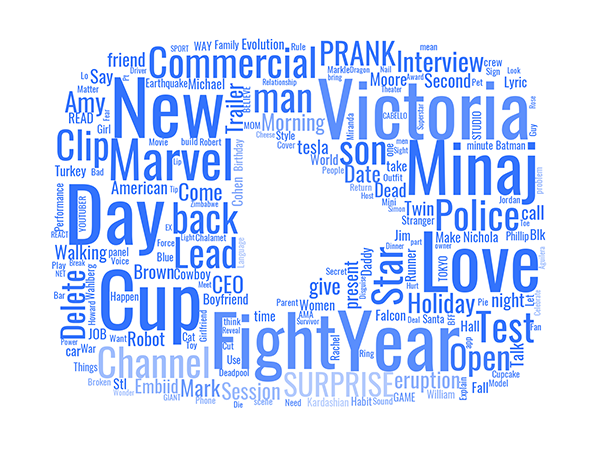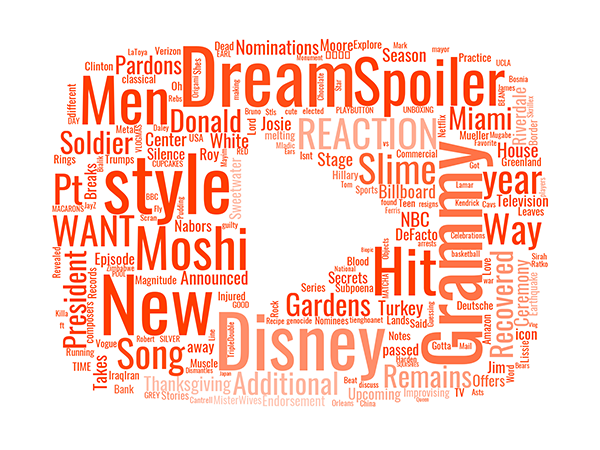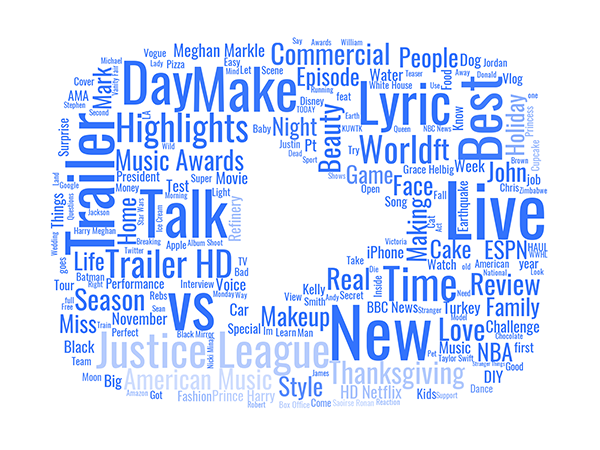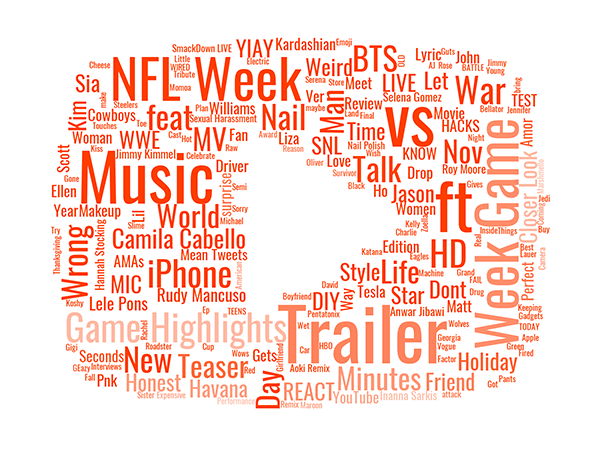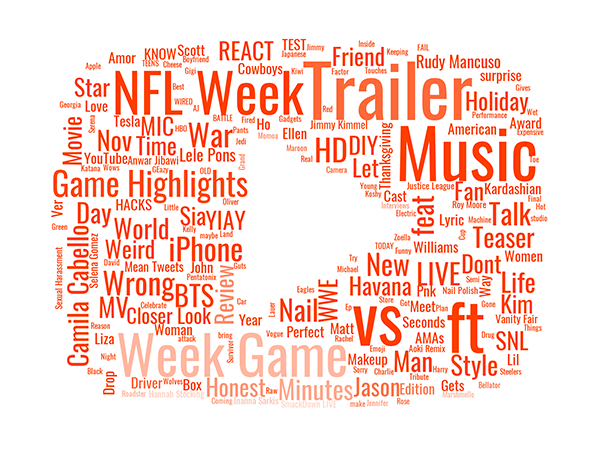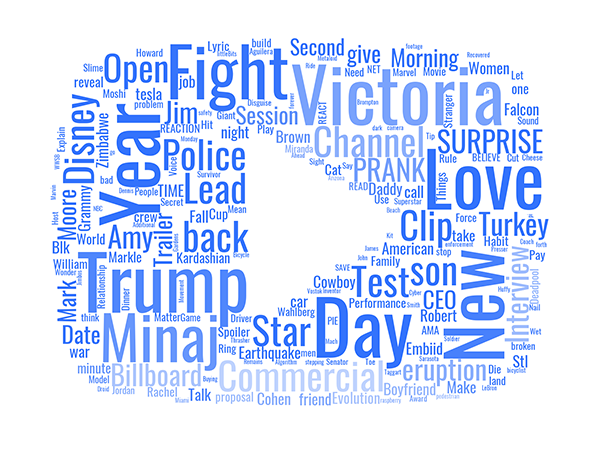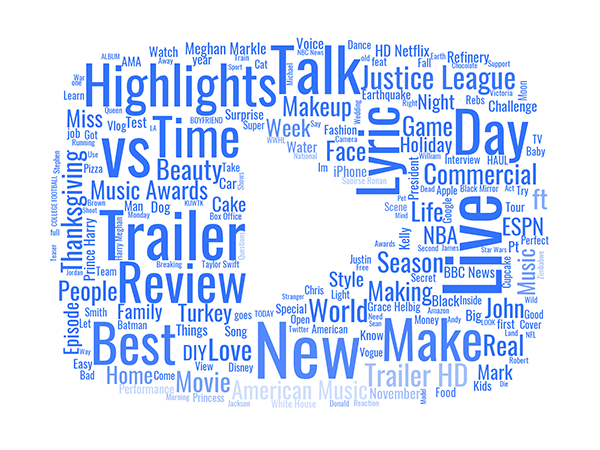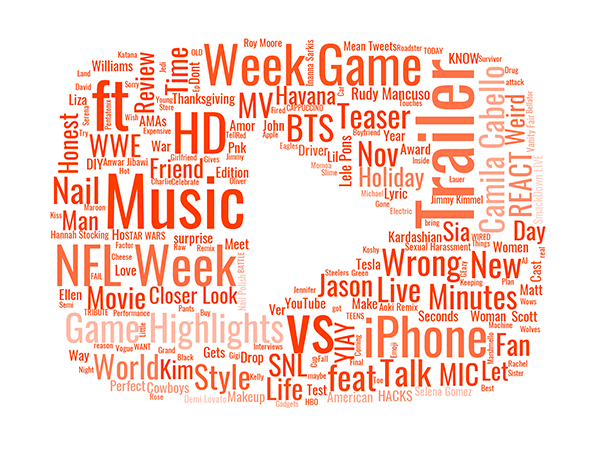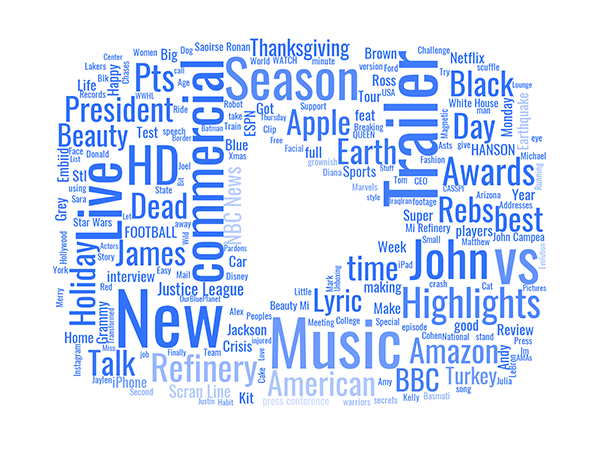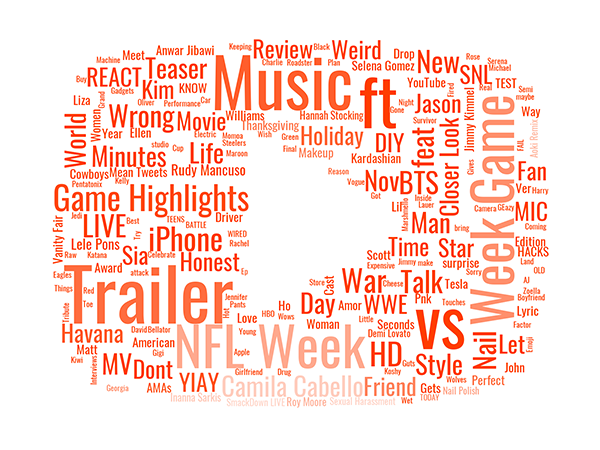What is popular?
Lots of factors can contribute to the success or popularity of a Youtube video: number of views, level of engagement, ratio of likes to dislikes, ratio of views to subscribers, etc.
Lets start by finding out which videos are grabbing most people's attention by looking at the number of views as the determinant for popularity.
>
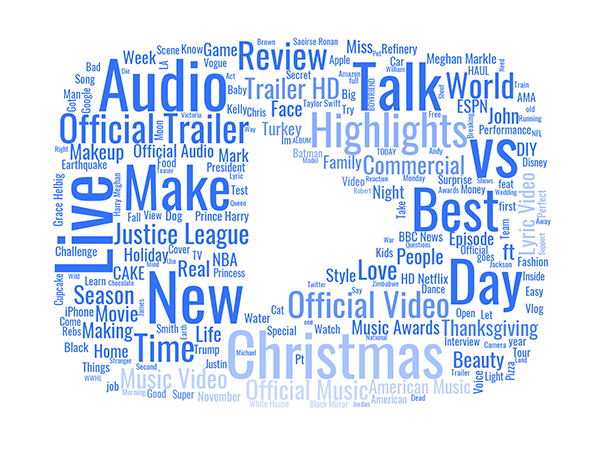
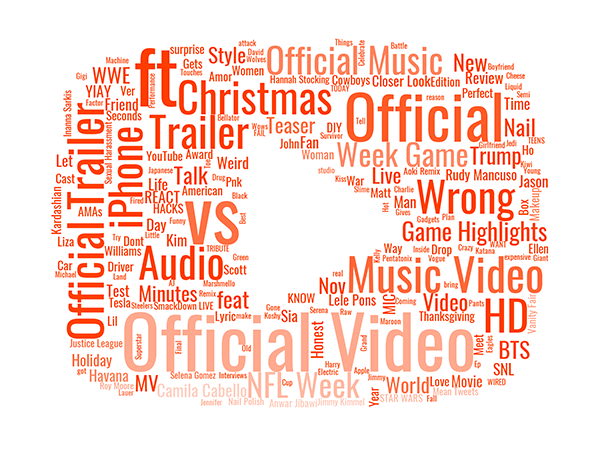
What did you notice?
The pair of word clouds generated before show the most frequently used words in video titles with below average number of views (left) and with above average number of views (right).
Some words appear in both clouds and some appear multiple times in one cloud. For example, the word "official" appears many times in the right cloud and also shows up in both clouds. This suggests that for this particular dataset, such "repeat" words tend to appear very frequently in video titles, and thus are not particularly meaningful. It also makes sense that words like "Christmas" and "iPhone" (referring to the release of the iPhone X) are popular during this period of time. Overall, there are no striking differences between the two word clouds, so the results are not particularly interesting. In the next set of word clouds, lets filter out non-meaningful words like "official" and "christmas", which we will call our "repeat-offenders."
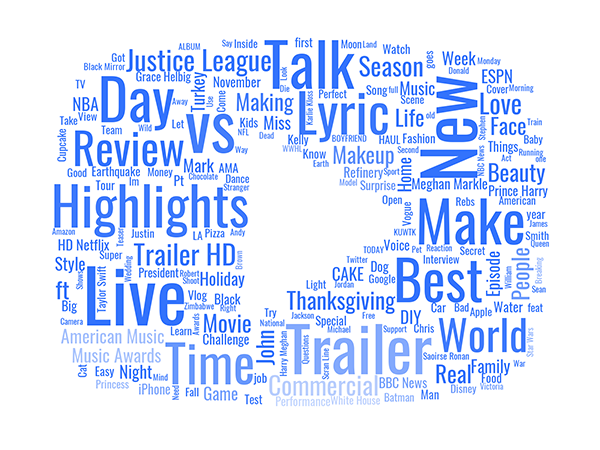
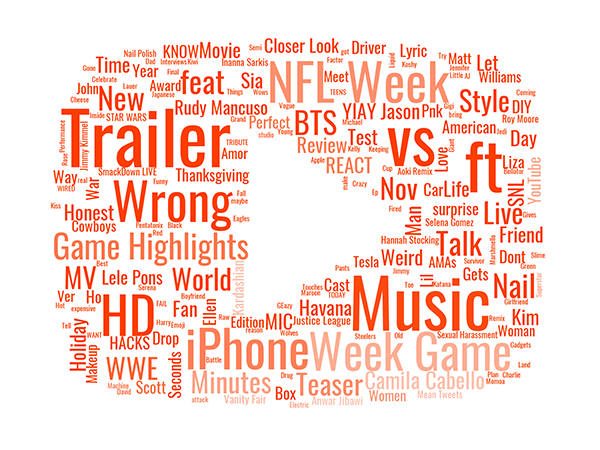
Doing better: tighter bounds
It seems like using the average as the lower-upper bounds threshold isn't producing very interesting results. Lets tighten the bounds by discarding all video titles in the 2nd quartile. Remember, we only care about the best and the worst.
The following set of word clouds show only the words in the bottom 25th and top 25th percentile of # of views.
